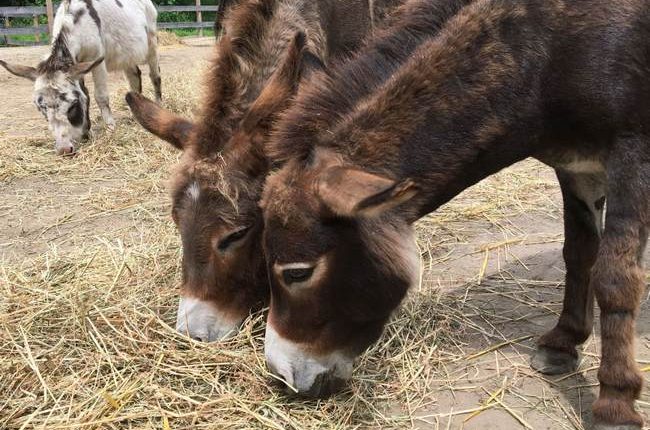Share this @internewscast.com

The domestic donkey, also known as the burro (Equus africanus asinus), traces its origins to the African wild ass and stands as one of the earliest animals domesticated by humans. These small beasts of burden are incredibly resilient, capable of consuming a wide range of foods, and can endure conditions that would prove fatal to horses. They are generally considered more intelligent than horses but can exhibit stubbornness. Several years back, I went elk hunting with a man named Bill, who owned a burro called Jenny for transporting elk quarters from the mountains. However, I recall an incident where we attempted to load a bundled green black bear pelt onto her, and after much fuss, she refused to budge until the hide was removed. Bill ultimately had to carry the pelt out himself.
In the American Southwest, burros were frequently employed by miners, which has led to current-day burro races in locations like Cerrillos, New Mexico, where backcountry runners participate in events with these animals.
I bet that’s a real kick.
Burro races pay tribute to the history of the Old West and are centered on the complex relationship between runner and beast of burden. Burros—a term derived from Spanish referring to donkeys and their wild relatives—must bear a saddle, pick, pan, and shovel, symbolizing a past era and the legendary rush by miners to register land claims with their pack animals.
Some 70 teams tested their skills Saturday in a race winding through the historic, turquoise-mining town of Cerrillos in northern New Mexico. Runners led burros by rope on 6-mile (10-kilometer) and 3-mile (5-kilometer) courses on unpaved roads and single-track desert trails.
More ambitious burro races in Colorado can extend for nearly 30 miles (48 kilometers).
When I was a younger man, I might have been interested in giving this a try, although I probably would have had to mule it over some. I was never a competitive runner, after all, and any victory on my part would have been far from assured.
These races differ from horse races in that the humans aren’t riding the burrow, but leading it:
Runners can’t ride the burro but can push, pull and coax the animal as long as they don’t abuse it. Some racers swing a rope in circles — like a lasso — to encourage movement. Others on the trail cry out, “Hup, hup!”
It’s unclear if the racers try to spruce up their animals’ appearance, by, say, brayding their tails.
















